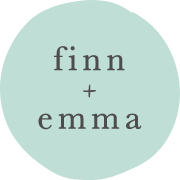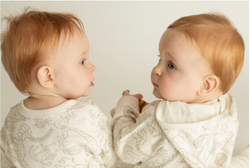So you’re having a baby! That’s great news. You’re probably busy getting mentally and physically prepared—and accumulating lots of cute and practical things you’ll need once baby arrives.
It’s also time to start preparing your home. Below we provide helpful tips and advice for making your living space as safe as possible for your little one throughout his or her infancy and into toddlerhood.
What are the main home safety issues for babies and infants?
The main home safety issues for babies and infants are related to hazards in the following categories, broadly:
- Furniture
- Electricity
- Falls
- Fire and burns
- Strangulation/suffocation/choking
- Water
- Food
How can I make my home safe for baby?
Your baby will be crawling before you know it, so it’s best to go ahead and take precautions that will benefit you even into baby’s infancy. In this section, we offer practical tips and advice in each of the above categories.
And, may we offer an overall piece of advice that might sound silly, but makes a whole lot of sense? It’s a good idea for you or your spouse or other adult family member to get down on the floor and “crawl” around, looking out for potential dangers. Babies can quickly get into something they shouldn’t, and getting down at their eye level will help you see issues that may need fixing.
Also, it goes without saying, but use this time to get any repairs done that your house may need.
Furniture dangers
- Cover sharp furniture corners (and edges, if needed) with padding or bumpers. And if you have a hearth, don’t forget to insulate those edges as well.
- For heavy furniture like bookcases and dressers, it’s best to secure them to the wall to avoid accidental tipping. If your furniture didn’t come with an anti-tip kit, they are inexpensive and readily available.
Also: If your home was built before 1978, you can have a specialist test for lead paint, which can be a risk to children. And it’s a good idea to put a fresh coat of paint (look for low-/no- volatile organic compounds (VOC)) in any room where old paint is starting to peel or chip.
Electrical hazards
- Place outlet plug covers on all unused electrical sockets in your home.
- Unplug and store electric appliances that aren’t in use, or be sure they are beyond baby’s reach.
Fall prevention
- Use baby gates and/or banister guards to block stairwells and gaps in stair rails. Here are some great, practical tips on how to childproof your staircase. Of course you’ll also want to use baby gates to block off any other areas where your child shouldn’t be, for which you can’t close a door to seal off the area.
- Also think about things that could present a fall risk to you, especially when you’re holding baby—slippery floors, a rug that isn’t secured, etc. Be sure you have non-slip pads under all area rugs.
Fire safety and burn prevention
- Check the batteries in all of your smoke detectors (and carbon-monoxide detectors), which should be on every level of your home and in hallways near bedrooms. Also—make sure the number on your home or apartment is clearly visible in the event of an emergency.
- If you don’t already own a fire extinguisher, purchase one and be sure you know how to use it.
- If you have floor heaters and/or radiators, you don’t want baby getting anywhere near these (when they are hot). Block baby’s access with a cover, baby gates, or whatever works best for your particular set-up.
Strangulation/suffocation/choking prevention
- Strangulation is a big concern for babies and infants. Look around your home and identify anything that’s a potential risk. Especially: cords on window treatments (solutions and more info here) and electronic cords that may be lying on your floor (stash these away, tack them up, or otherwise ensure that baby could not get twisted up in them).
- Put small objects out of reach. A common rule of thumb is that if an object can fit through a toilet-paper tube, it is a choking hazard to baby.
- Always store your and visitors’ purses out of baby’s reach.
- And, of course, safe sleeping is important too.
Water safety
- Unfortunately, kids can drown in a small amount of water. So, drain the water from a bath immediately afterwards. And empty a bucket of water as soon as you’re done with it.
- You’ll want to get doorknob covers and toilet locks to keep baby away from water dangers in the bathroom. This also keeps them away from potentially harmful cleaners you may keep in the bathroom.
- Do you have a pool? Of course you’ll want to make sure that is drained or properly sealed.
- Make sure your hot-water heater is set to less than 120 degrees to avoid the risk of scalding baby’s skin.
Food safety
On the topic of food safety, your main goals are to prevent baby from eating something that he or she shouldn’t—from both a poisoning and choking standpoint.
Take the time to review this information and pointers from FoodSafety.gov, and consider printing out this helpful flyer and keeping it posted on your fridge. Also be sure to have childproof cabinet locks in your kitchen and anywhere else needed.
Also check the house for poisonous plants and move them out of baby’s reach
And, get anything that you child should definitely not be ingesting (cleaners, medicines, laundry detergent, hand sanitizer, etc.) high up and secure.
What are the main home safety issues for toddlers?
As baby becomes more mobile and eventually becomes a little walking (and mischief-making!) machine, it’s time to revisit and adjust your existing safety measures and precautions.
If you haven’t done these things by the time your child is going on one, do them now:
- Childproof drawer locks for the kitchen and anywhere else needed
- Install window guards or safety bars as needed
- Get covers for stove and oven knobs, and burners as needed
- Put safety latches on refrigerator and freezer doors
- Place lockable covers on garbage cans
Safety information numbers and resources
It’s a good idea to keep phone numbers for your local health department and utilities at easy reach, in case of an emergency. Of course you want to know how to contact your pediatrician or local hospital system for urgent, non-911 issues as well.
And, keep this info handy for the National Capital Poison Center. The national poison control number is: 1-800-222-1222.
For more information on childproofing your home, see this guide from Cleveland Clinic, and ask your medical provider if they have any resources that could be of use for your particular needs.

















